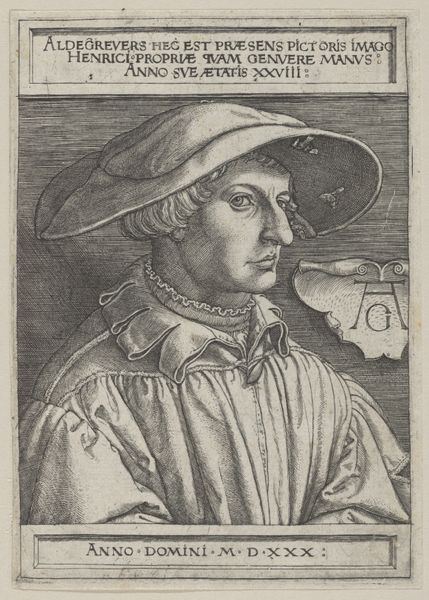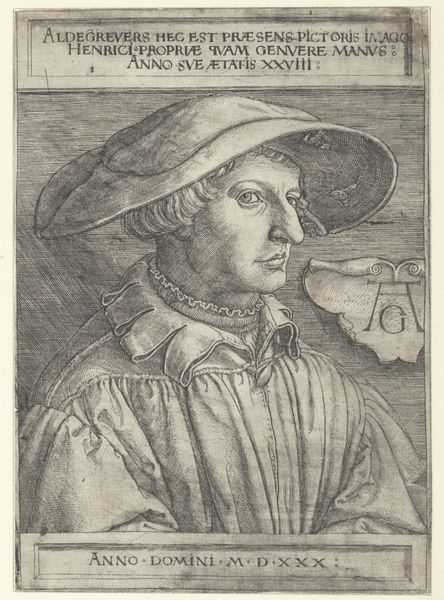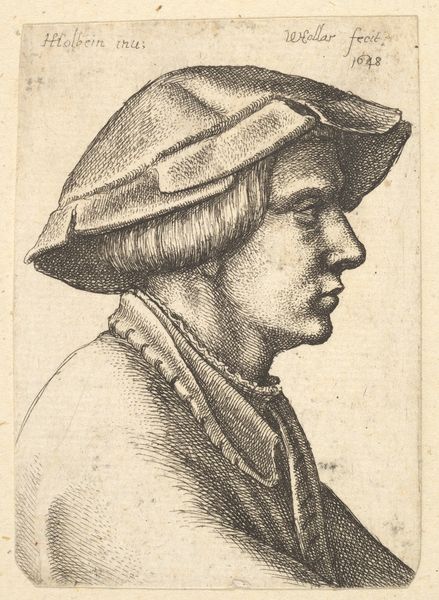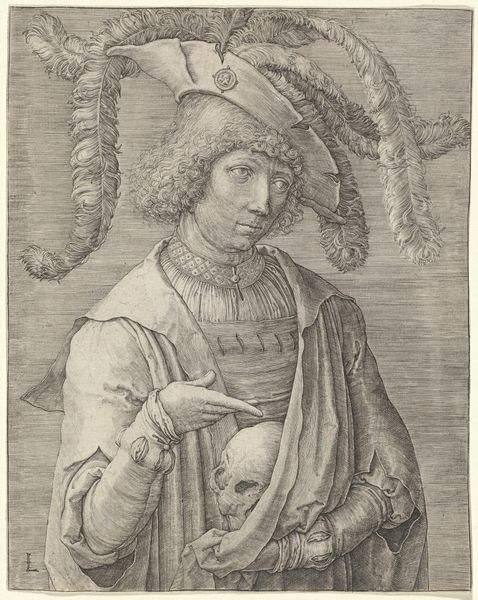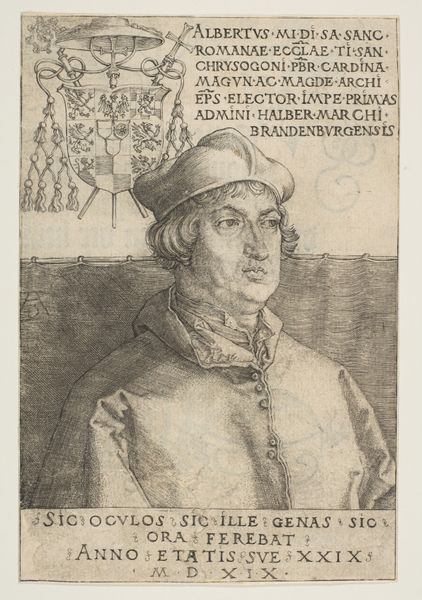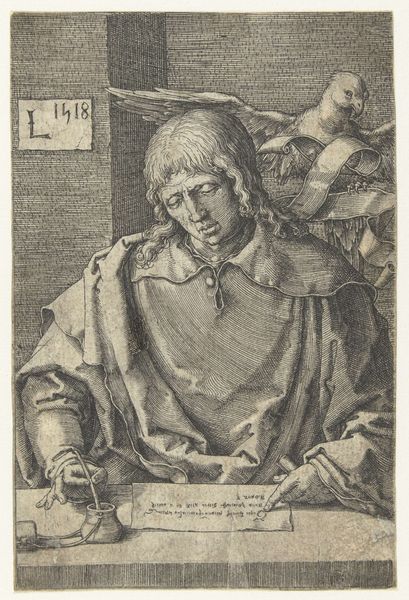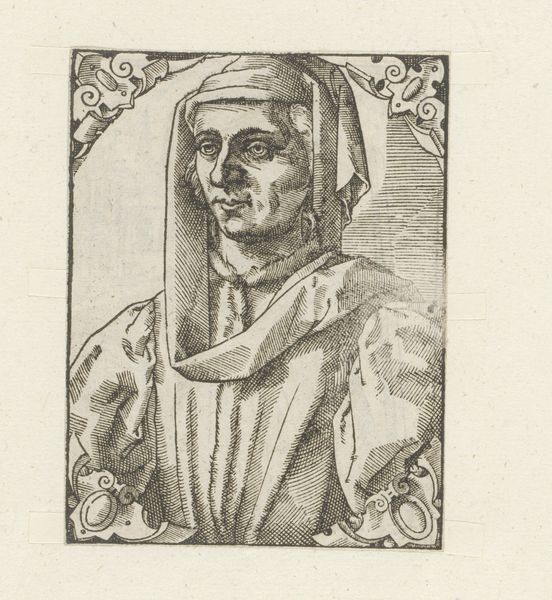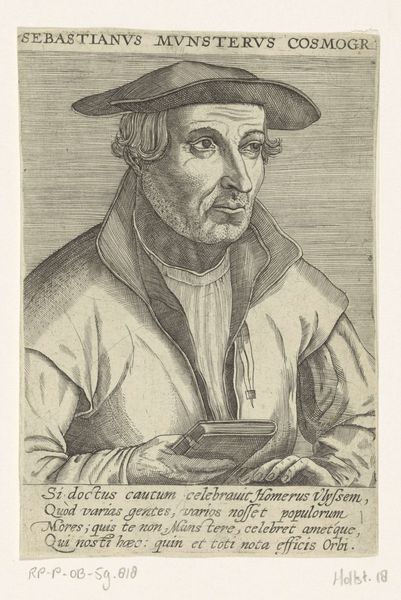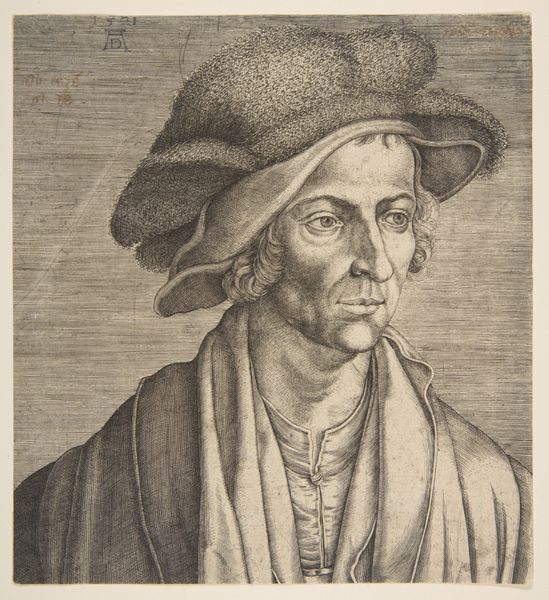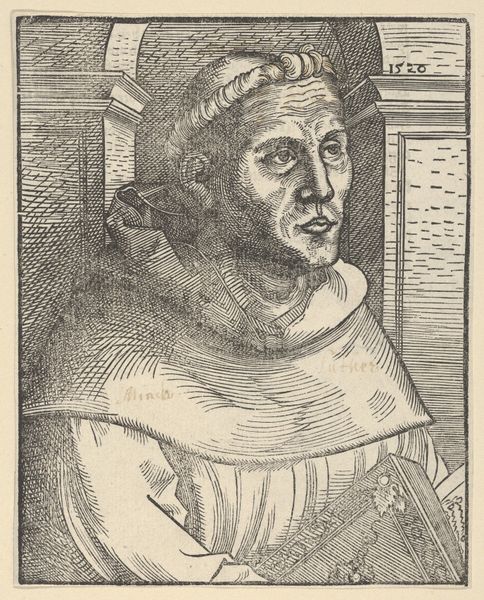
print, engraving
#
portrait
#
self-portrait
# print
#
figuration
#
form
#
11_renaissance
#
line
#
northern-renaissance
#
engraving
Dimensions: plate: 14.7 x 10.3 cm (5 13/16 x 4 1/16 in.) sheet: 17.1 x 13 cm (6 3/4 x 5 1/8 in.)
Copyright: National Gallery of Art: CC0 1.0
Curator: Here we have Heinrich Aldegrever’s Self-Portrait from 1530, an engraving showcasing the artist at age 28. Editor: My first thought is just how incredibly detailed it is. The lines create a striking level of realism. You can almost feel the texture of the fabric and see the individual hairs. Curator: Yes, the Northern Renaissance embraced a high degree of naturalism. The formal rigor lies in the clear rendering of light and shadow to give the face depth, alongside his compositional focus on line and form. The meticulous lines create not only detail but structure. Editor: Right, but look closer at that detail. Every single line was etched into a metal plate, then inked and pressed onto paper. The labour and skill involved in the printmaking process is quite amazing. The tools alone would have required great dexterity. What would motivate such intense work for a single image? Curator: The meticulous craftsmanship serves the ideological function of bestowing prestige. Notice how he has included the date of the engraving and his age—in effect presenting himself to posterity as both skilled craftsman and educated gentleman, aligning with humanist ideals. Editor: So, the “self” is actively constructed through the choices made in crafting this image. But there is a contrast here as well, there's this formality versus the material reality of creating an object. The hat and collar point towards bourgeois life and perhaps the developing mercantile system which afforded him such self promotion. Curator: It also provides an insight into Aldegrever’s technical prowess and command of line. We can study how the forms render volume and three-dimensionality out of a two-dimensional surface. The linear vocabulary used by Aldegrever creates a cohesive pictorial space within a print format, pushing what the material of the line could perform aesthetically and ideologically. Editor: Exactly, a beautiful and useful piece of evidence on not just Northern Renaissance art, but labor as part of constructing both identity and market, I find his technical and material decisions quite thought provoking. Curator: Indeed. The self-portrait transcends mere representation and gives clues into not only the hand that created it but a slice of his time.
Comments
No comments
Be the first to comment and join the conversation on the ultimate creative platform.
